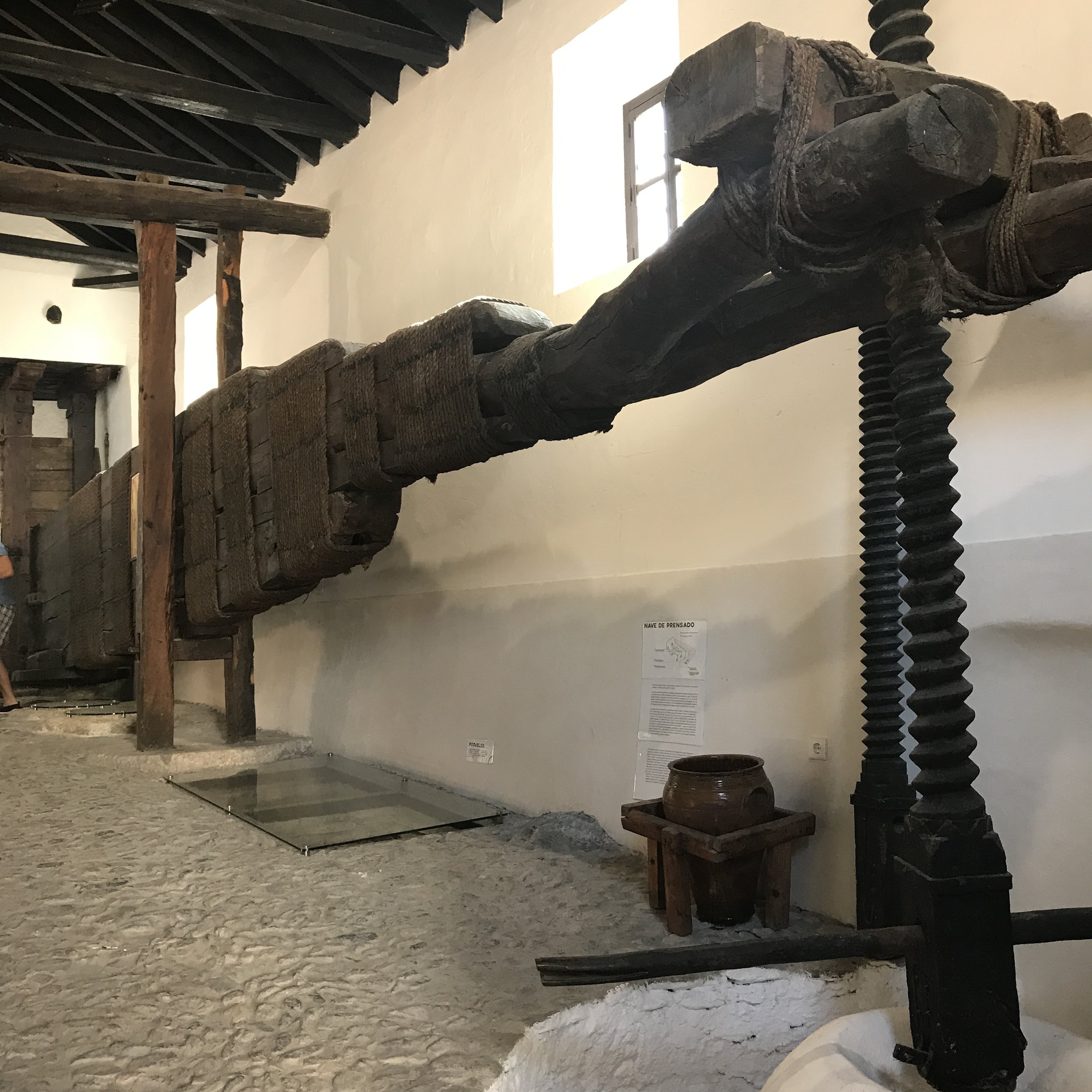Discovering Spain’s Liquid Gold
Accounting for 44% of the global production, Spain produces a larger volume of olive oil than Italy and Greece combined! In addition, the quality of Spain's "liquid gold" is increasingly among the finest in the world. Eighty percent of Spain’s olives are grown in the Andalusia region, due to its warm and dry climate. Hence, in a recent trip to southern Spain, I decided to spend some time learning about olives and olive oil. I was able to visit an olive tree orchard and a 15th century olive mill. I also got to taste quite a few delightful oils!
Here are a few interesting tidbits I learned about olive production:
There are about 272 varieties of olives in Spain.
The varieties of olives are usually identified by their size and shape, not their color.
The color of olives has mostly to do with the ripeness or maturity of the olives.
Green olives are less mature and tend to be harvested early in the season.
As times passes, the olives turn reddish and then black
Black olives are harvested towards the end of season.
The most popular olive in Spain is the picual olive with an oil content of 20-30% and accounting for about 25% of the global olive production.
Olive trees take about five years to start producing olives and about 15 years to fully mature.
Some olive trees can be as old as 600 years!
The average yield of olive oil is about 20%. So for instance, for every 100kg (220 lbs.) of olives, you get a yield of about 20 liters of olive oil.
In Spain, it is not uncommon for some families to grow olives to make their own olive oil for personal consumption. On average, a family would need 30-40 trees to have enough olive oil for a year.
The harvest takes place anywhere between September and December depending on the desired ripeness.
When olives are ready to be harvested, the trees are shaken either manually with long sticks or mechanically with “shaking” trucks. The olives are collected on nets, separated from the leaves and branches, and then washed to remove any dirt or dust. Olives fresh off a tree are incredibly bitter. This is due to the vegetable water inside them. If the olives are to be consumed and not pressed into olive oil, they need to be brined in water and salt for at least two weeks to remove the vegetable water that causes the bitterness. The longer they are brined, the mellower the flavor profile of the olive will be.
If the olives are to be used for the production of olive oil, then they must be pressed within 24 hours of being harvested. Otherwise they will begin to oxidize and it will affect the quality of the oil in an adverse way. The olives are crushed into a paste together with the pits. This paste then is pressed with a small amount of water to aid in the extraction of the oil. A higher temperature of the water will increase the yield of the oil but will destroy the delicate flavors and aromas so coveted in quality extra virgin olive oil. In the EU, the temperature of the water cannot exceed 27°C (80°F) to be considered first, cold-pressed, extra virgin olive oil. Once the paste is pressed, the extracted liquid is allowed to rest and, as the oil rises to the top, it is decanted or centrifuged to separate it from the regular water and vegetable water.
Sometimes the process is repeated with the remaining paste but the water temperature is higher. This produces a lower quality olive oil that, in the EU, cannot be referred to as extra-virgin olive oil. Many times you will see this type of olive oil referred to as “second press”, “virgin”, “light” or “pure” olive oil. These oils are still low in mono-saturated fats but have a very neutral flavor and no antioxidants.








